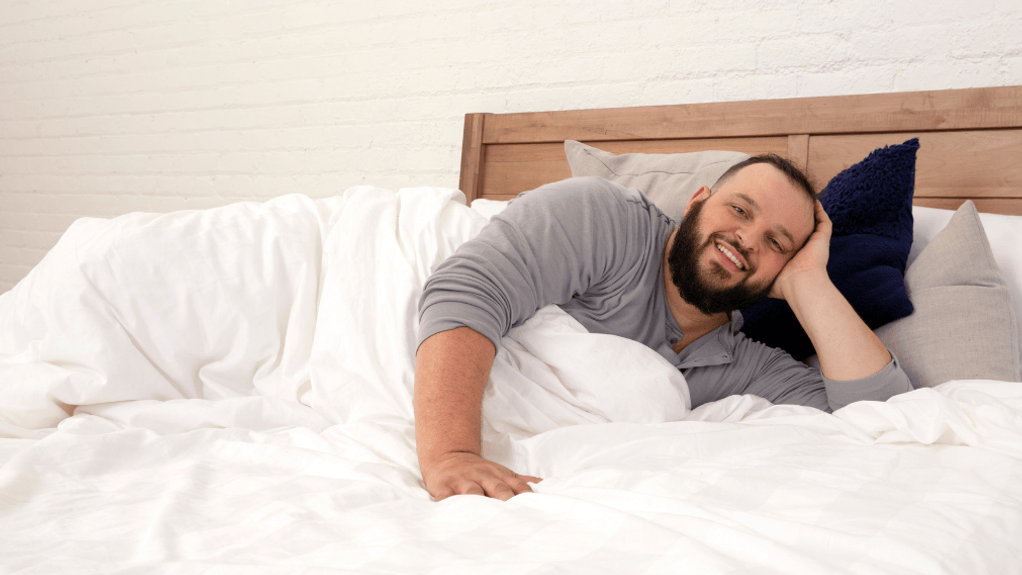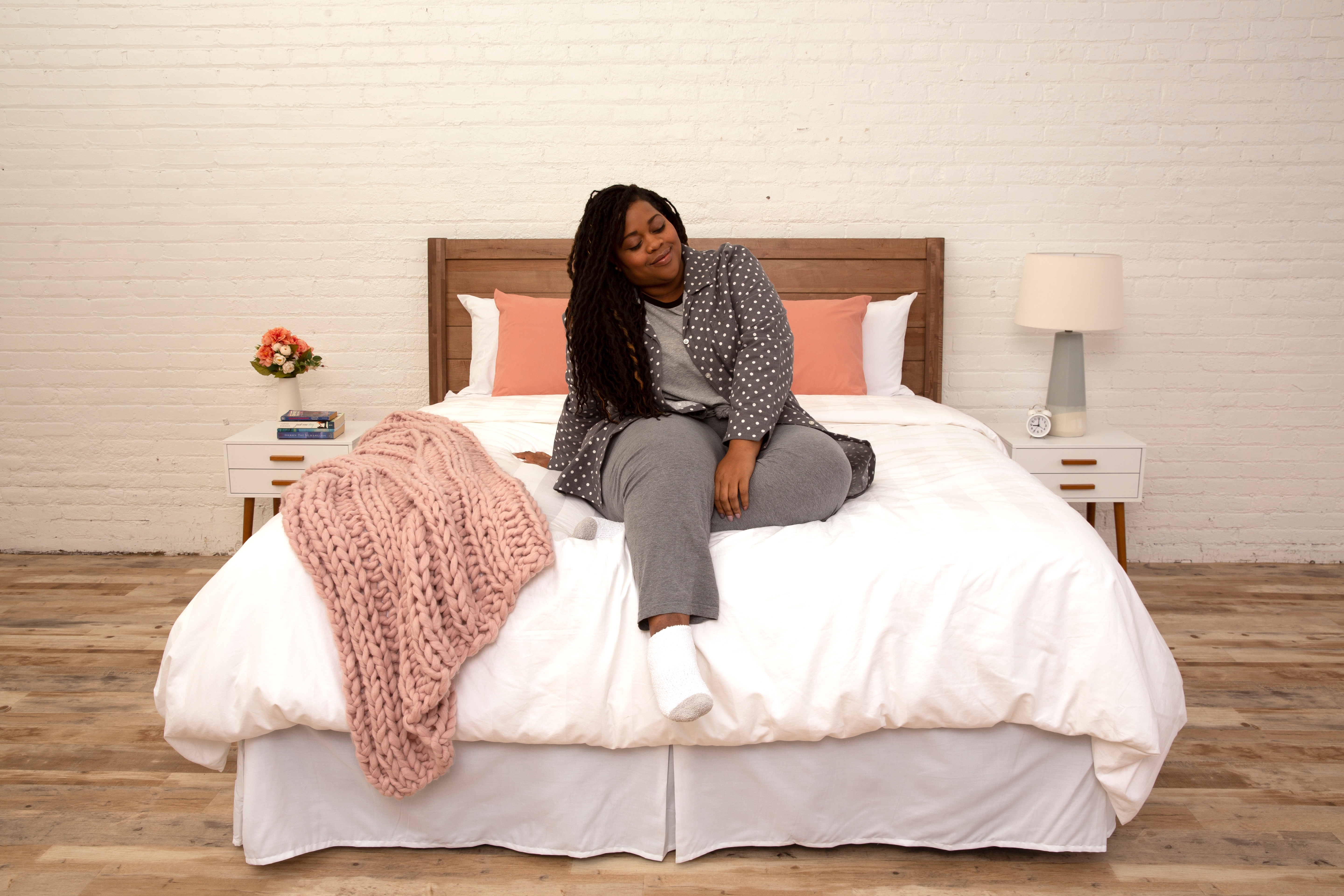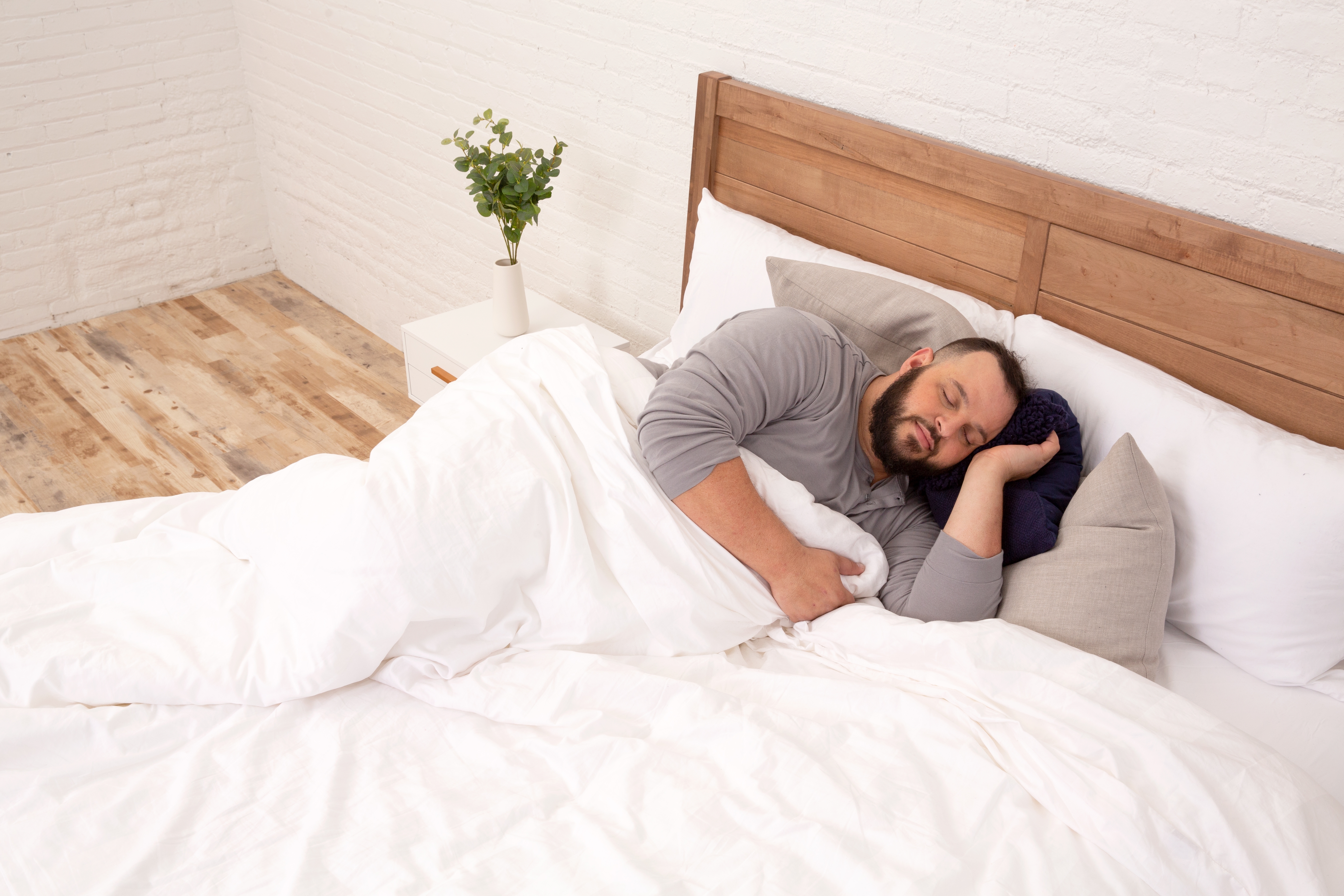Even with a top-notch mattress and cozy bedding, falling asleep can be challenging. While the standard advice is to aim for seven to eight hours of sleep a night, recent research suggests that the quality of your sleep is more important than the quantity. So, if you find yourself staring at the ceiling and feeling anxious every time you look at the clock, seeing the minutes (or hours) pass by, here’s how to sleep better, the natural way.
How to Sleep Better at Night Naturally
While there are some instances where your doctor may prescribe medication to help you sleep better, these natural yet effective techniques are the best way to safely and consistently sleep better.
Stick to a Sleep Schedule
Establishing (and maintaining) a regular sleep schedule can make it easier to go to bed and wake up at the same time every day, resulting in improved mental and physical health. You may even find that your workouts improve, and you feel sharper at work. While it may be difficult at first, don’t give up! The other tips on this list will make sticking to a sleep schedule easier.
Create a Restful Sleep Environment
Imagine a sleeping environment that's so comfortable it feels like a sanctuary. When you create such a space, getting quality shuteye becomes a breeze.
- Clear any clutter and keep your room clean.
- Regularly clean your sheets and the rest of your bedding to keep them hygienic and smelling fresh.
- Invest in blackout blinds or curtains to block out early morning rays that might disturb your slumber.
- Keep your room at the ideal sleeping temperature — between 60 and 67 degrees F. This range is optimal for sleep because it helps to cool down your body, which is a natural signal for sleep. It also prevents overheating, which can disrupt your sleep.
- If complete silence makes you antsy, turn on a fan or some relaxing music, or get yourself a white noise machine.
- Use an aromatherapy diffuser or pillow spritz to help relax your mind while keeping your room smelling like a spa.
Limit Daytime Naps
While a quick disco nap earlier in the day won’t likely do any harm, according to the Sleep Foundation, napping too late in the afternoon (or for too long) can make it more difficult to fall asleep at night because your body doesn’t feel like it needs as much sleep. This is because napping too close to bedtime can interfere with your body's natural sleep-wake cycle, making it harder to fall asleep.
Don’t Neglect Physical Activity
While exercise is vital for mental and physical health, it can also help you sleep better — and not just because a good sweat sesh can tucker you out. It helps reduce stress while elevating the production of melatonin, which regulates your sleep cycle.
If you like exercising outdoors, you’re lucky because exposure to natural light can help you establish a solid sleep-wake cycle. Physical activity before bed is also beneficial. While your body increases in temperature during exercise, it drops 30-90 minutes afterward, facilitating sleepiness.
Nix Blue Light Exposure
Blue light exposure from devices like cell phones, laptops, and tablets can make it more challenging to fall asleep because it suppresses melatonin production, a hormone that regulates your sleep-wake cycle. To improve sleep quality, turn off all devices two to three hours before bedtime, enable night (or dark) mode, and use blue light filtering apps.
Try to Avoid Eating and Drinking Pre-Bedtime
Experts suggest that you stop eating and drinking (especially caffeine and alcohol) two to three hours before bedtime to prevent sleep disturbances like acid reflux and heartburn. If you’re feeling hunger pangs, opt for a light snack that’s low in calories but packed with nutrients, such as eggs, oatmeal, cottage cheese, air-popped popcorn, veggies with hummus, a small handful of nuts, or a piece of toast with a light shmear of peanut butter.
Rule Out Sleep Disorders
If you’ve tried all the techniques on this list and you’re still having difficulty sleeping, it may be time to speak with a doctor to rule out any sleep disorders that are linked to physical and emotional distress. While insomnia is the most common, other conditions include sleep apnea, restless leg syndrome, narcolepsy, and parasomnias. Ignoring these conditions can lead to chronic sleep deprivation, which can have serious health consequences.
Whether you incorporate one or several of these natural sleep techniques into your routine, you're on your way to a good night’s sleep — especially if you have a Big Fig Mattress.



